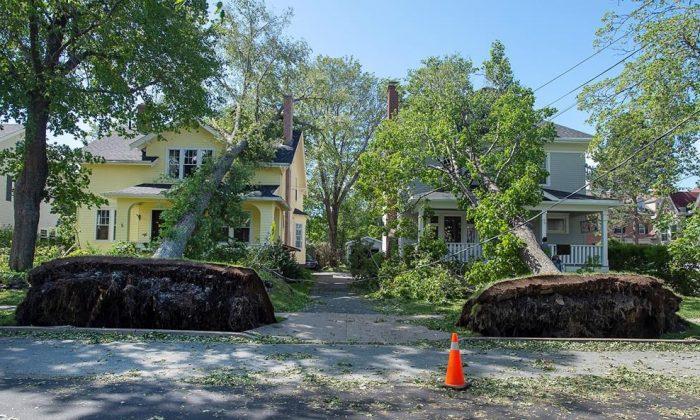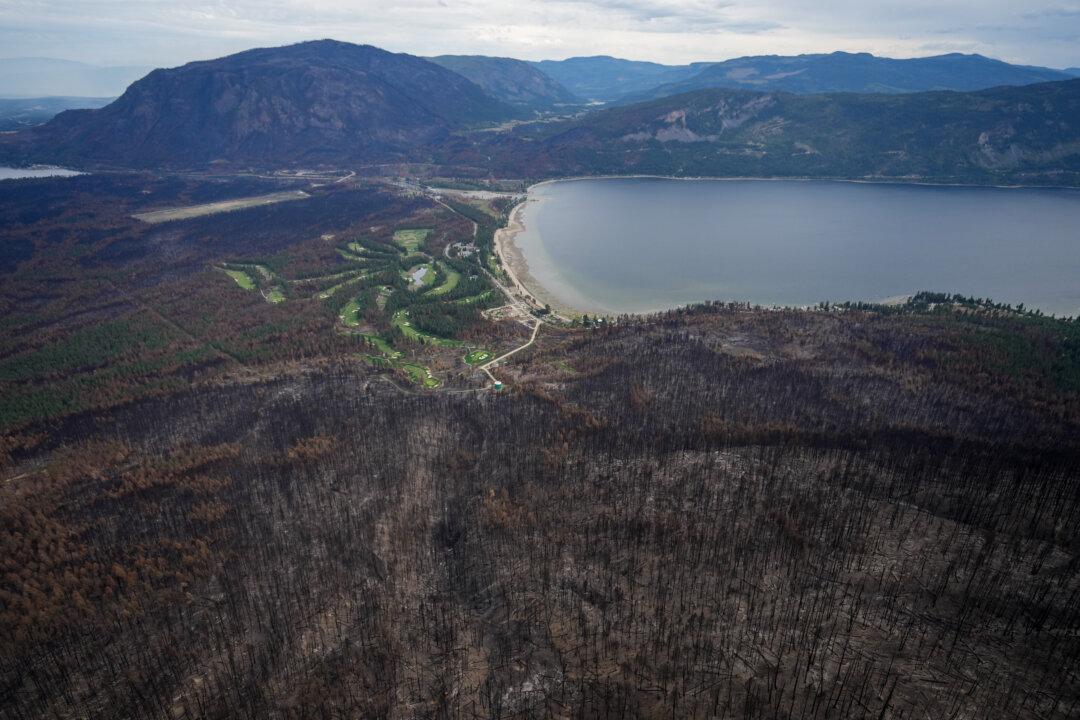HALIFAX—Post−tropical storm Dorian may have departed Atlantic Canada but the scars it inflicted across the region with its hurricane strength wind gusts and torrential rain will take some time to heal.
Utility companies in Nova Scotia, New Brunswick, P.E.I., and Newfoundland and Labrador are facing a massive task in restoring electricity to hundreds of thousands of customers left in the dark as Dorian flattened trees that pulled down power poles across a vast area. And the huge amount of tangled debris littering streets is now making the work of utility crews that much harder.
Nova Scotia Power reported early Monday, Sept. 9 morning that nearly 200,000 of its customers were still waiting to be reconnected, while thousands more in the other Atlantic provinces faced a similar fate.
On Sunday, N.S. Power C.E.O Karen Hutt called the situation a “worst case scenario.”
She said that even with the help of utility crews from Quebec, Ontario, New Brunswick, Florida, and Maine it would likely be next week before the lights are back on in all areas of the province.
Those crews are also being assisted by Canadian Armed Forces personnel who are helping clear roads so utility vehicles can get to job sites.
Many schools across Nova Scotia will be closed today, and emergency officials have been urging people in hard hit areas to stay home—both for their own safety and to give cleanup crews more elbow−room to work.






Friends Read Free